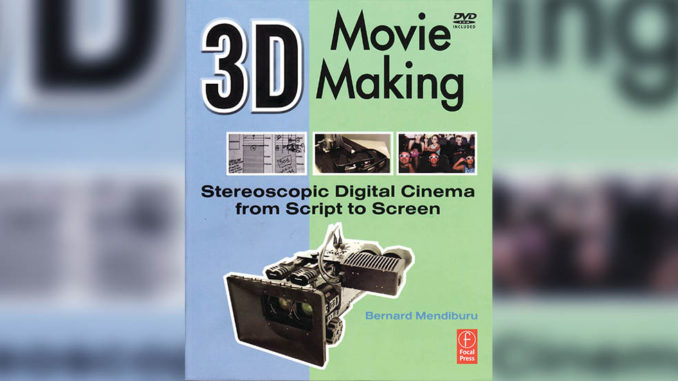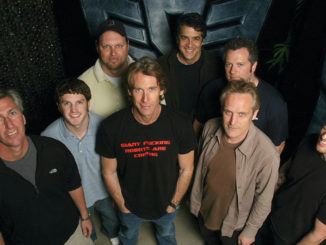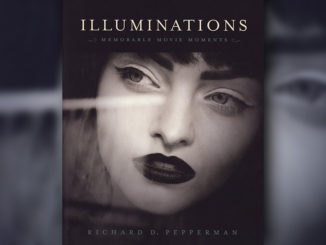
by Ray Zone
3D Movie Making:
Stereoscopic Digital Cinema
from Script to Screen
by Bernard Mendiburu
Focal Press
224 pps., paperbound, $49.95
ISBN: 978-0-240-81137-6
Books on stereoscopic cinema and 3D production make up a very short list. With the proliferation of digital 3D cinema theatres and over 25 stereoscopic feature films in production (as of May 2009), that is about to change. When a film is released in both 2D and 3D versions, and the theatres showing the stereoscopic version comprise 30 percent of the total number of screens but bring in 70 percent of the box-office receipts, you know there is an economic engine behind all the 3D production.
Additionally, there will soon be a simple “plug-and-play” solution for consumers to enjoy stereoscopic content on their 3D-ready TV at home. This potentially huge aftermarket for theatrical 3D content may prove to be the sine qua non for 3D movies to become normative in the entertainment landscape. The day may be coming soon when a 2D release to theatres is as frequent as a black-and-white picture is today.
(Full disclosure: I wrote the Preface to this book. Further, as the author of two books on stereo cinema and a 3D film producer, I was happy to do so. But, in the interests of journalistic “objectivity,” let me reassure that I will sound a few caveats about the present tome. And, speaking as a terminal bibliophile in all things 3D, I can further assure that I have a ready familiarity with the aforementioned short list of books about stereo cinema.)
This is Bernard Mendiburu’s first book. It has been launched into print by Focal Press, a publisher of books about motion picture production and post-production that are primarily technical in nature. Mendiburu’s book contains the requisite technical information about stereoscopic perception and its relation to cinema. But within its 200 pages, the discussion is oddly eclectic in combining technical fundamentals with aesthetic considerations that are drolly observed. Most books about 3D movies published so far have consisted either of exceedingly technical tomes filled with visual trigonometry or filmographic compendia of stereoscopic productions. University presses have also just begun publication of works addressing 3D movies within the highly theoretical arena of post-structural discussion.
Particularly useful to editors will be Mendiburu’s discussion of how cutting 3D is different from 2D.
Two key technical books on the subject include The Theory of Stereoscopic Transmission & Its Application to the Motion Pictureby Raymond and Nigel Spottiswoode (University of California Press, 1953) and Foundations of the Stereoscopic Cinema, A Study in Depth by Lenny Lipton (Van Nostrand Reinhold, 1982). An exhaustive encyclopedia of stereo cinema is 3D Movies, A History and Filmography of Stereoscopic Cinema by R.M. Hayes (McFarland and Company, 1989) and a sophisticated post-structural tome is Techniques of the Observer, On Vision and Modernity in the Nineteenth Century by Jonathan Crary (MIT Press, 1992).
3D movies have been a recurrent phenomenon throughout cinema history. Every 30 years, a new wave of stereo cinema seems to take place. As a result, the technology and techniques for production and post-production have not become standardized, much less common practice. Even consistent terminology for stereoscopy and its production principles haven’t been formulated. All of this, however, is now changing with the implementation of digital 3D cinema and the universal adoption of 3D TV in the home that is about to take place.
Another factor that has worked against a widespread understanding of stereoscopic vision and 3D movie production is the fact that the practitioners of stereo have kept the “secrets of 3D” very closely guarded, as if they were a species of magic instead of a technical art and craft well within the bounds of science. This, too, is changing and Mendiburu’s book is indicative of a general move to stereoscopic pedagogy that is now taking place—at seminars, trade shows and digital cinema summits sponsored by organizations like SMPTE and the SMPTE Task Force for 3D in the home. All of this is necessary for stereoscopic production of motion pictures to become a common practice.
This move to more open discussion of stereoscopic tools and their use can also be seen with certification programs such as the “3DIQ” program offered by the 3ality Digital company in Burbank, California. 3ality is the company that provided the stereo camera technology and post-production pipeline for the stereoscopic feature film U23D, as well as real-time satellite-cast transmission of NFL games in 3D. The 3ality 3DIQ program offers certifications as “3D Director,” “Stereographer” and “3D Technical Director,” among other functions.
So, where does Mendiburu’s book stand in relation to all this? It is a good first flag planted in the quickly shifting sands of stereoscopic production. It’s a hybrid that gives some consideration to the existing tool sets for production and post-production right up to color grading and packaging for digital cinema. Particularly useful to editors will be Mendiburu’s discussion of how cutting 3D is different from 2D. The single most important idea with 3D editing is “depth continuity” or “depth matching” across the cuts. A fine discussion of practical 3D editing and using 2D tools to edit in 3D is also essential reading here for editors.
Within its 200 pages, the discussion is oddly eclectic in combining technical fundamentals with aesthetic considerations that are drolly observed.
Throughout the book are comparison tables and listings of stereoscopic web-sites that make this a useful resource for beginners to stereo. Numerous cartoons illustrate visual concepts throughout. These are undoubtedly drawn by Mendiburu and give the impression of sketches rapidly executed on a cocktail napkin to explain somewhat complex ideas, a methodology not without a certain charm. They do effectively demonstrate the ideas under discussion.
Focal Press has characterized the user level of Mendiburu’s book as “Novice to Intermediate” and that is accurate. While the specific toolsets for stereoscopic production and particularly post-production will change, the underlying fundamentals of visually rigorous production for 3D will not. Those fundamentals, clearly expressed, make this a fine primer for motion picture professionals about to set forth into the world of 3D movies.





